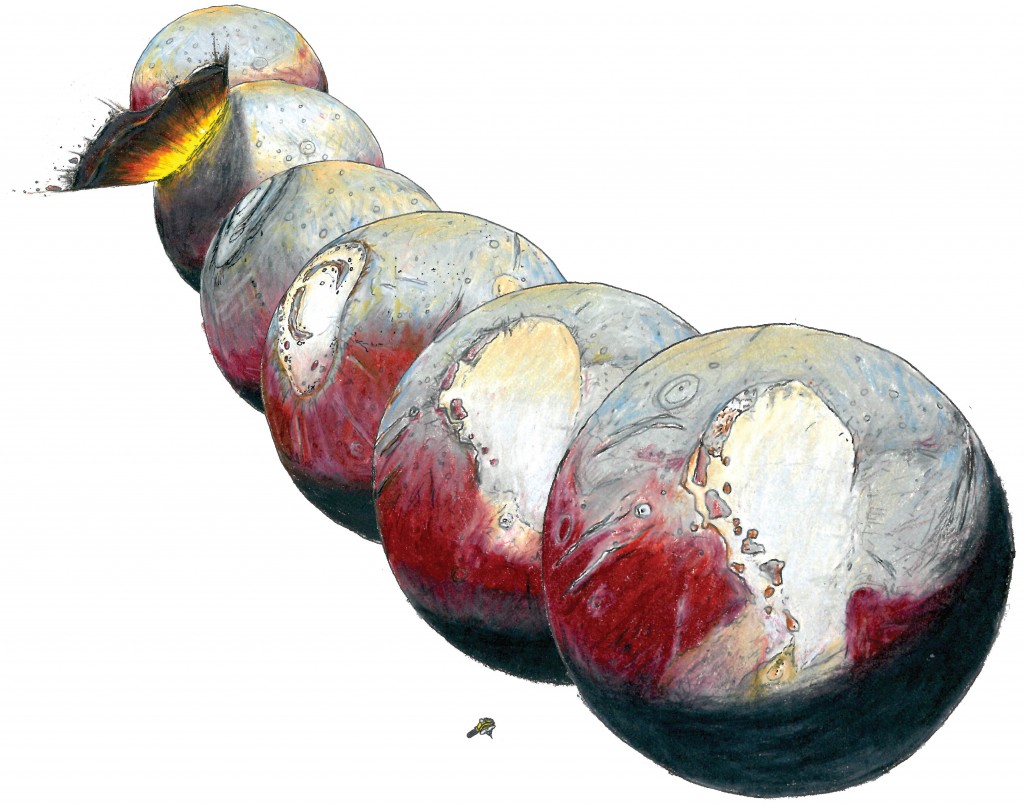
Sputnik Planitia (the left lobe of Pluto’s “heart”) likely formed in the aftermath of comet impact into Pluto. Sputnik Planitia formed northwest of its present location, and reoriented to its present location as the basin filled with volatile ices.
(Credit: Illustration by James Tuttle Keane)
A heart-shaped region on the surface of Pluto, called Sputnik Planitia, is at the centre of two theories about the dwarf planet’s reorientation. New studies suggest than as Sputnik Planitia filled with ice, it changed Pluto’s position. There are two theories as to why that happened. One posits that the ice accumulation has changed tidal interactions between Pluto and its moon Charon, causing Pluto to align with the moon’s tidal axis. The other theory suggests that such reorientation may be caused by a hidden subsurface ocean on Pluto.
Authors:
James T. Keane, Isamu Matsuyama, Shunichi Kamata & Jordan K. Steckloff
Corresponding author:
James Keane, University of Arizona, Tucson, Arizona, US
Original paper published in Nature on November 16, 2016.


